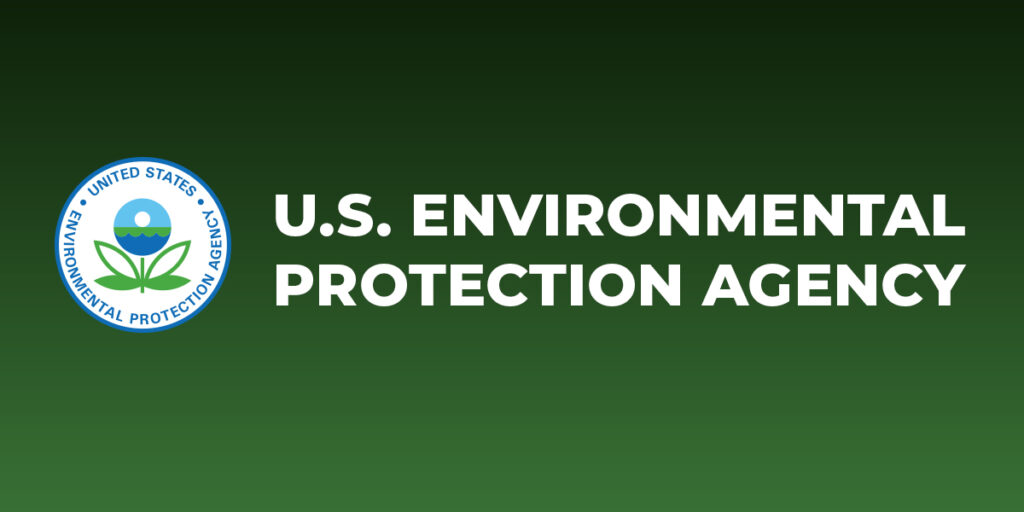 (AGENPARL) - Roma, 31 Ottobre 2024
(AGENPARL) - Roma, 31 Ottobre 2024(AGENPARL) – gio 31 ottobre 2024 Issued: Oct 31, 2024 (10:16am EDT)
If you wish to unsubscribe please do so
here: http://url6130.epa.mediaroom.com/ls/click?upn=u001.iqz6hAvLdUl-2FaSixKUG3iyFJBsxNAroAZOQ1BID8fKIiLAUfJX2sQlhu1tzKAOIu-2BU84uzAzSpWvmWyHnsNJDRYXWx5dlMz75Zp9ch-2BQlG6mQHPYjReZhS13hvd5qOopnPhp_-2B0Ok6Af7hyz7Kqg6CR74pYblAA1WjrUjKSJUAiv3NOub0DC4O7JPWGxIlQ7kBB-2FSztyl6K5Yji0j-2Ftrpn3eV8VbbW-2FlEwd1l4WCLVby1JCaKOg4nxKB8Pf-2F6pZHSW29lPM16yBvLdRvuUkS-2FdM-2B3LszqJwCpfzFwr4CPRhLh9odN74mmzU-2BMmJRjwL29kOoidKGR9-2F8MFLZFmrm4mUipZJ9aii1Sumu8tN-2FQ-2BH-2BEYIqlHbR3Kcg95xWZKG-2B-2FriKt
EPA Announces Nebraska Selectee to Receive Nearly $300K in Grants to Help
Businesses Prevent Pollution
U.S. Environmental Protection Agency, Region 7 – 11201 Renner Blvd., Lenexa,
KS 66219
Iowa, Kansas, Missouri, Nebraska, and Nine Tribal Nations
EPA Announces Nebraska Selectee to Receive Nearly $300K in Grants to Help
Businesses Prevent Pollution
Contact Information: Jonathan Klusmeyer, 913-343-2991,
LENEXA, KAN. (OCT. 31, 2024) – Today, the U.S. Environmental Protection
Agency (EPA) announced that the University of Nebraska-Lincoln has been
selected to receive nearly $300,000 in grants to provide technical assistance
to businesses to develop and adopt pollution prevention (P2) practices in
local communities.
The University of Nebraska-Lincoln was selected to receive $298,650. The
university will provide technical assistance to food and beverage, chemical,
automotive, and metal manufacturing businesses. The focus will be on
identifying toxic chemical alternatives, process optimization, and water and
energy conservation. The program will conduct on-site assessments as well as
follow-up assessments as needed.
“Pollution prevention benefits the environment and creates healthier
communities by decreasing waste and conserving our resources,” said EPA
Region 7 Administrator Meg McCollister. “These funds will support innovative
projects that enhance sustainability and promote cleaner neighborhoods
throughout the Heartland.”
“The Partners in Pollution Prevention (P3) program at the University of
Nebraska-Lincoln has been providing source reduction-focused technical
assistance to Nebraska manufacturers using engineering students since 1997,”
said Professor of Civil and Environmental Engineering Dr. Bruce Dvorak. “We
are excited to have grant funding to continue to work with Nebraska
manufacturers. We expect to continue to help manufacturers to reduce their
energy and water use and waste production, but also identify additional cost
savings including tax exemptions, rebates, and their eligibility for several
programs that can provide cost share for replacing energy-inefficient
equipment. The proposed tasks will result in at least eight businesses
obtaining a detailed P2 assessment from full-summer assistance and two to
eight businesses provided with several weeks of assistance and an assessment
report. The average implemented impacts from each manufacturer in recent years
have been over $189,000 in annual cost reductions, 3.5 million gallons of
water annually conserved, and 830 metric tons of carbon dioxide equivalent
annually reduced.”
In total, EPA announced 48 selectees across the country that will collectively
receive nearly $19 million in grants to support states, tribal nations, and
U.S. territories. Thanks to President Biden’s Bipartisan Infrastructure Law,
nearly half of the funds awarded this year were made available with no cost
share/match requirement.
Pollution prevention, also known as P2 or source reduction, is any practice
that reduces, eliminates, or prevents pollution at its source prior to
recycling, treatment, or disposal. Preventing pollution at the source rather
than managing waste afterward is an important way to support American
businesses’ efforts to reduce costs, while protecting communities from
exposure to toxic chemicals and conserving natural resources. These practices
are essential for protecting health, improving environmental conditions –
including in and around disadvantaged communities – and preserving natural
resources like wetlands, groundwater sources, and other critical ecosystems.
Between 2011 and 2022, EPA’s Pollution Prevention program issued over 500
grants totaling more than $54 million, which have helped businesses identify,
develop, and adopt P2 approaches. These approaches have resulted in 31.9
billion kilowatt-hours in energy savings, eliminated 20.8 million metric tons
of greenhouse gases, saved 52 billion gallons of water, reduced 1 billion
pounds of hazardous materials, and saved businesses more than $2.3 billion.
EPA expects to award funds once all legal and administrative requirements are
satisfied. Once awarded, selected grantees will document and share P2 best
practices that they identify and develop through these grants, so that others
can replicate these practices and outcomes. Each selected grantee will also
develop at least one case study during the grant period on P2 practices that
are new or not widely known or adopted, or where detailed information on the
P2 practices could benefit other businesses or P2 technical assistance
providers.
The grants funded by the Bipartisan Infrastructure Law will be fully funded
upon being awarded, with individual grant awards as high as $350,000. Grants
that are a part of the traditional P2 grants program will be funded over a
two-year funding cycle and require a cost share/match of 50%. EPA’s
Pollution Prevention Grant program advances President Biden’s Justice40
Initiative, which set a goal to deliver 40% of the overall benefits from
certain federal investments to disadvantaged communities that are marginalized
by underinvestment and overburdened by pollution.
Background
President Biden’s Bipartisan Infrastructure Law made a historic $100 million
investment in EPA’s P2 program, more than doubling the funding for P2
grants. The first round of 39 awards funded by the Bipartisan Infrastructure
Law was announced in September 2022 and the second round of 24 awards was
announced in October 2023.
The list of selections can be found below, and the selected project summaries
can be found on EPA’s Pollution Prevention website.
Read more about P2 and EPA’s P2 Grant Program.
# # #
Learn more about EPA Region 7
Visit the Region 7 Media page
To unsubscribe or change your settings click here:
http://url6130.epa.mediaroom.com/ls/click?upn=u001.iqz6hAvLdUl-2FaSixKUG3iyFJBsxNAroAZOQ1BID8fKKhIILjisBDEktm3-2BIos9X6OO12m8yvgcxe2QPfP6WY5bIstHl4fkWb59DIGfg8OP-2F2eTO8g-2FgTNIOYFvx0rcqChb9QTc-2BLgyDSJhcpiUEqkg-3D-3DUc6w_-2B0Ok6Af7hyz7Kqg6CR74pYblAA1WjrUjKSJUAiv3NOub0DC4O7JPWGxIlQ7kBB-2FSztyl6K5Yji0j-2Ftrpn3eV8VbbW-2FlEwd1l4WCLVby1JCaIcTY5-2BXssTyhfwxLzO0QlKTo9slN-2BO0QH8kozU4v39YnHtz6l9K5Tyy6XpFgS5Os0j-2BpHazk-2FyfYvskTH6daVclGwK47kAXlchLEwmPGJkitC3sY5xJOolgVwOHPrNkmdF193cROUsmxH4DoOSAmb

